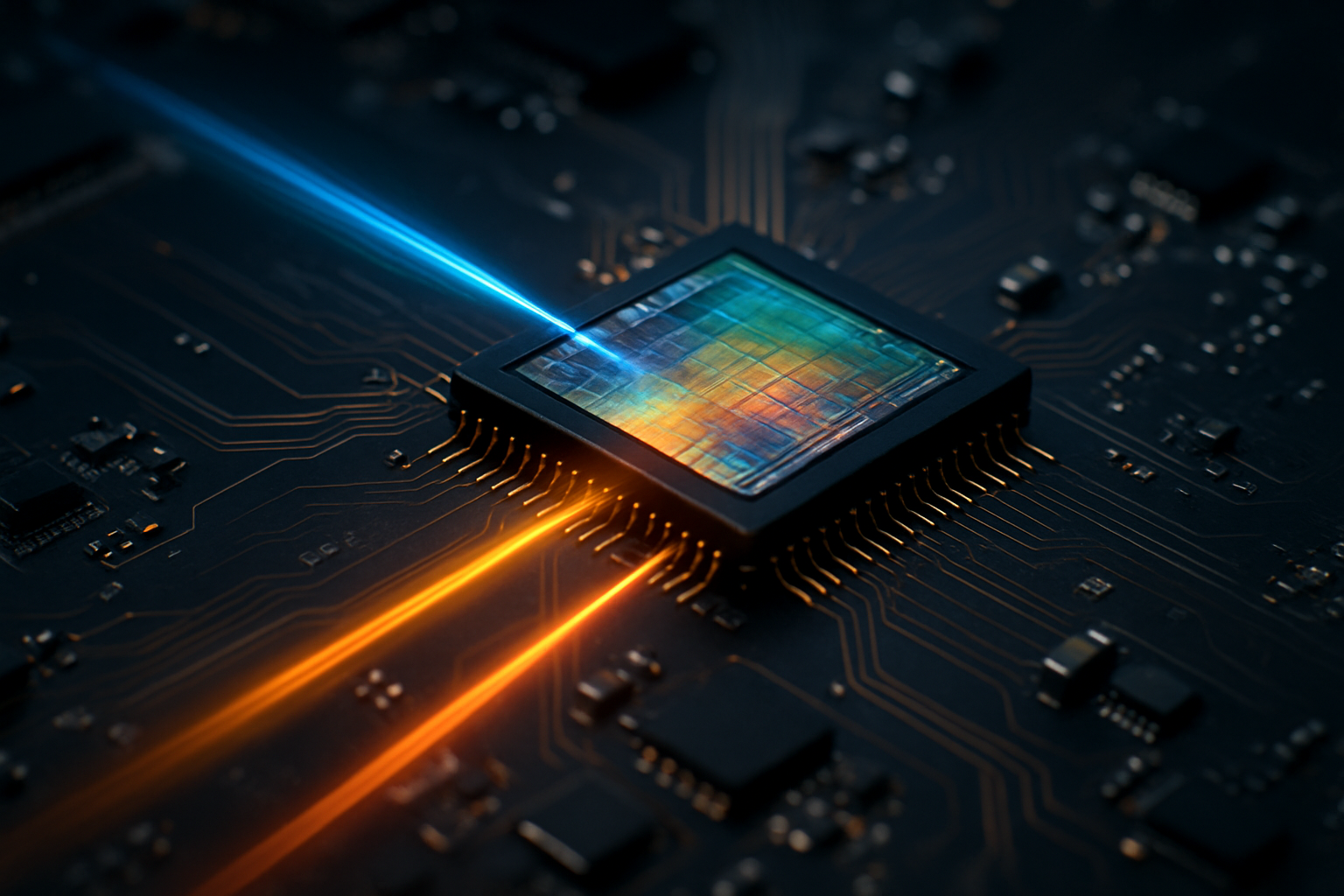Photonic Microchips: Light-Speed Computing on the Horizon
In a world where data demands are skyrocketing, traditional electronic microchips are approaching their physical limits. Enter photonic microchips: a groundbreaking technology that harnesses light to process information at unprecedented speeds. This revolutionary approach to computing promises to reshape our digital landscape, offering solutions to some of the most pressing challenges in data centers, telecommunications, and beyond.

The concept of using light for computing isn’t entirely new. Fiber optic cables have been the backbone of long-distance data transmission for decades. However, the integration of photonics at the chip level marks a significant leap forward. By miniaturizing photonic components and integrating them directly onto silicon chips, researchers have overcome previous limitations, paving the way for practical, scalable photonic computing solutions.
Breaking the speed barrier
One of the most compelling advantages of photonic microchips is their potential for mind-boggling speeds. Light travels much faster than electrons, and photonic circuits can operate at frequencies far beyond those of electronic chips. This translates to processing speeds that could potentially reach terahertz levels – orders of magnitude faster than current electronic processors.
Moreover, photonic chips can handle multiple wavelengths of light simultaneously, enabling parallel processing on an unprecedented scale. This capability is particularly valuable for tasks like complex simulations, big data analysis, and artificial intelligence applications, where massive amounts of data need to be processed concurrently.
Energy efficiency: A green computing revolution
As data centers continue to expand and consume ever-increasing amounts of energy, the need for more efficient computing solutions has never been more critical. Photonic microchips offer a promising solution to this growing problem. By using light instead of electricity, these chips can significantly reduce power consumption and heat generation.
Traditional electronic chips generate substantial heat as electrons move through resistive materials. This heat not only limits performance but also requires energy-intensive cooling systems. Photonic chips, on the other hand, produce minimal heat, allowing for denser chip designs and reduced cooling requirements. This could lead to more compact, energy-efficient data centers and a considerable reduction in the carbon footprint of the tech industry.
Overcoming integration challenges
While the potential of photonic microchips is immense, their development hasn’t been without challenges. One of the most significant hurdles has been integrating photonic components with existing electronic systems. The vastly different scales at which photonic and electronic components operate have made this integration particularly tricky.
However, recent breakthroughs in silicon photonics have made significant strides in addressing these challenges. By leveraging existing silicon manufacturing processes, researchers have been able to create hybrid chips that combine photonic and electronic elements on a single platform. This approach not only makes photonic chips more compatible with current technologies but also more cost-effective to produce at scale.
Real-world applications and future prospects
The potential applications for photonic microchips are vast and varied. In telecommunications, these chips could dramatically increase data transmission rates, potentially revolutionizing internet speeds and capacity. In the realm of quantum computing, photonic chips offer a promising platform for manipulating quantum states of light, potentially accelerating the development of practical quantum computers.
Another exciting application is in the field of lidar (Light Detection and Ranging) systems for autonomous vehicles. Photonic chips could enable more compact, efficient, and cost-effective lidar solutions, helping to accelerate the adoption of self-driving technologies.
As research continues and manufacturing processes improve, we can expect to see photonic microchips making their way into a wide range of devices and systems. From next-generation smartphones to advanced medical imaging equipment, the impact of this technology is likely to be felt across numerous industries.
The road ahead: Challenges and opportunities
While the future of photonic microchips looks bright, several challenges remain before they can fully realize their potential. Improving manufacturing yields, reducing costs, and ensuring long-term reliability are all critical areas that require ongoing research and development.
Additionally, the transition from electronic to photonic computing will require significant changes in chip design, software development, and system architecture. This transition presents both challenges and opportunities for the tech industry, potentially reshaping the competitive landscape and opening up new avenues for innovation.
As we stand on the brink of this light-speed computing revolution, one thing is clear: photonic microchips have the potential to fundamentally transform our digital world, ushering in an era of faster, more efficient, and more capable computing systems. The race is on to harness the power of light, and the results promise to be nothing short of illuminating.





